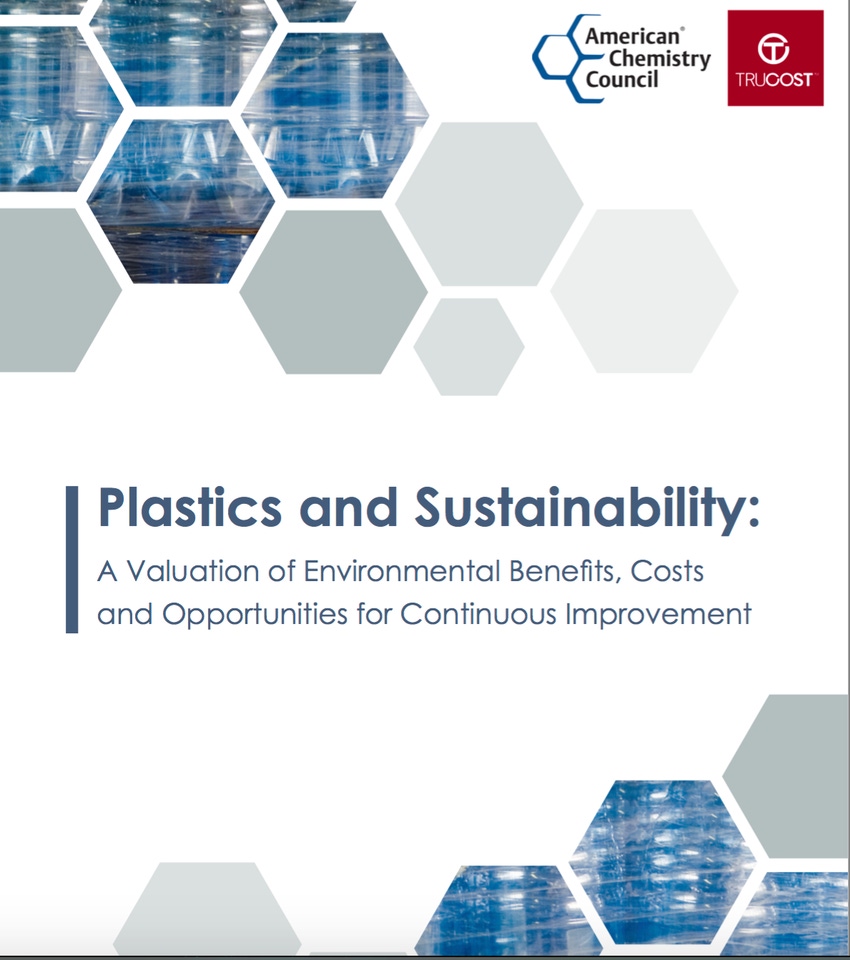Plastics perhaps not so bad after all?
July 27, 2016

Headlines about the environmental impacts associated with the production and disposal of plastics are an omnipresent part of modern life. And although the plastics industry has through the years devoted immense efforts to changing public perception of its products, to date the impact has been negligible. Moreover, past studies highlighting the environmental costs of plastic use in consumer products, including emissions of greenhouse gases, air, land and water pollutants, depletion of water and the production of marine debris in the global oceans (e.g. conducted by independent environmental research provider Trucost for UNEP, 2014), further reinforced the industry’s negative image.
Other studies, however, have suggested that there is another side to the matter, and that a move away from plastics towards alternative materials – an aspect not examined in Trucost’s earlier study - may come at an even higher net environmental cost. Hence building on the findings published in these studies (Franklin Associates (2013) and Denksta (2011), which modeled the replacement of plastic with alternative materials (such as paper, steel, aluminum and glass), Trucost’s latest study made use of the company’s natural capital valuation framework to value the environmental costs of plastic and its alternatives. The findings are startling: according to Plastics and Sustainability: A Valuation of Environmental Benefits, Costs and Opportunities for Continuous Improvement, the environmental cost of using plastics in consumer goods and packaging is nearly four times less than it would be if plastics were replaced with alternative materials.
 The report writes that “Although alternative materials such as glass, tin, aluminum and paper are viable alternatives to plastic in many consumer goods applications, they have higher environmental costs in the quantities needed to replace plastic. Trucost estimates that substituting plastic in consumer products and packaging with alternatives that perform the same function would increase environmental costs from $139 billion to a total of $533 billion. In most cases the environmental cost per kilogram of alternative material is less than that of plastic. However, on average over four times more alternative material is needed (by weight) to perform the same function”.
The report writes that “Although alternative materials such as glass, tin, aluminum and paper are viable alternatives to plastic in many consumer goods applications, they have higher environmental costs in the quantities needed to replace plastic. Trucost estimates that substituting plastic in consumer products and packaging with alternatives that perform the same function would increase environmental costs from $139 billion to a total of $533 billion. In most cases the environmental cost per kilogram of alternative material is less than that of plastic. However, on average over four times more alternative material is needed (by weight) to perform the same function”.
The study made it clear, however, that a more sustainable plastics economy is both desirable and achievable, pointing out that the plastics manufacturing industry has significant opportunity to reduce the environmental costs of plastics through its operations and supply chains. The report’s authors recommend steps to help further reduce plastics’ overall environmental costs including:
• doubling the use of electricity from low-carbon sources such as wind, solar, and hydro power could yield $7.6 billion savings; or $15.2 billion with a switch to 100% low-carbon electricity
• developing more efficient packaging designs in the food and soft drinks and ice sector that deliver the same packaging functions but require 30% less plastic would yield environmental cost savings of $7.3 billion
• improving the fuel efficiency of vehicles used to transport plastics by 20% could produce $10.6 billion in environmental cost savings through technological change or modal shift toward lower emission transport modes such as rail.
The study also found that improved waste management and recovery could increase these environmental cost savings to $41 billion, or 30% of the overall environmental cost of consumer goods sector plastic use.

“We now have a fuller picture of the environmental benefits of using plastics,” said Steve Russell, vice president of plastics for the American Chemistry Council, which commissioned the study.
“From lighter, more fuel-efficient cars to smart packaging that helps our favorite foods last longer, our industry is committed to ongoing innovations that will advance sustainability across major market sectors and the globe.”
"Now is an exciting time for plastics and for sustainability. Emerging economies around the world are creating opportunities for more people to have access to health and hygiene products, good nutrition and the things that help us get more out of life. Making smart choices about what we produce and how we produce it will benefit people and the planet,” Russell said.
About the Author(s)
You May Also Like


